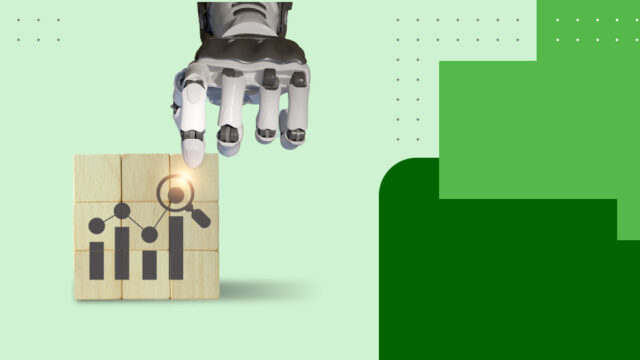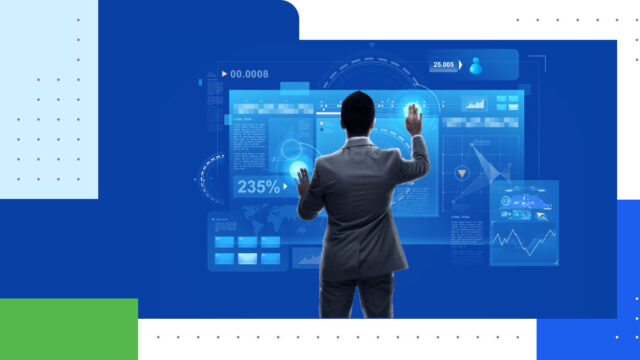
Six Cloud Computing Trends to Watch
Discover the latest cloud computing trends shaping the future of finance.
Cloud computing has transformed the way businesses operate, from storage and networking to applications and services. As fresh innovations are constantly emerging, finance and accounting professionals must embrace cloud computing to remain competitive. Gartner predicts that spending on cloud computing services will reach $591.8 billion in 2023.
What is cloud computing? The term refers to the concept of accessing IT resources on demand through the cloud. In this article, we’ll explore six cloud computing trends shaping the future of industries. By understanding and adapting to trends like the rise of edge computing and hybrid clouds, accounting practices can optimize their cloud computing strategies and stay ahead of the competition.
1. Edge computing and the rise of distributed cloud computing
Edge computing — also known as distributed cloud computing — is a technology architecture with multiple servers located near the user rather than being centrally controlled. Moving processing closer to the user increases speed and power.
Companies can run applications and IT resources with intensive space, performance or compliance demands by “renting” distributed cloud storage as a service. This gives users more powerful results while avoiding expensive storage investments and complicated setups.
Edge computing has gained momentum in recent years due to the increasing demand for low-latency, high-bandwidth and high-reliability applications, including:
- Autonomous vehicles
- Smart cities
- Internet of Things (IoT) devices like smartwatches and smart speakers
Financial services can benefit from edge computing while facilitating faster and more secure transactions. For example, edge computing can increase the speed and accuracy of audits. It enables organizations to process and analyze vast amounts of data in real time, collaborate from different devices and get faster and higher-quality insights.
Some cybersecurity risks do come with storing data outside the organization, though. Deploying multiple devices also opens up more points of attack, which is particularly risky when an organization is dealing with financial data. However, various security measures can counteract this — we’ll discuss these later on.
2. Hybrid cloud solutions gaining traction
Hybrid cloud solutions are becoming increasingly popular in the business world as they offer a blend of private and public cloud services. A multi-cloud strategy makes managing workloads and data more flexible, scalable and secure.
Into 2024, we’ll likely see more financial services companies using a public cloud solution for non-sensitive data and a private cloud solution for sensitive data to comply with regulations. In auditing and accounting, hybrid cloud services can ensure that data is secure, even when it’s being accessed from multiple sources. This can help auditors conduct more accurate and comprehensive audits in less time.
Additionally, hybrid cloud solutions can help organizations improve their analytics. Access to a unified view of data across multiple sources reduces the need for complex data integration.
3. Artificial intelligence and machine learning integration
Businesses often turn to cloud services to take advantage of artificial intelligence (AI) and machine learning (ML). Developing algorithms can require vast amounts of power and storage space, so it’s often significantly more cost-effective to “rent” the space from cloud providers.
Integrating AI and ML into operations can help companies become more efficient and better serve clients. Today, we’re seeing finance and accounting professionals automate many of their routine tasks with the help of AI and ML.
Automating jobs can improve efficiency, allowing professionals to focus on more strategic activities. In finance, this might include automating:
- Financial reporting
- Detecting fraudulent activities
- Risk management
Using cloud computing for AI and ML gives organizations the ability to analyze large data sets to identify trends, predict customer behaviors and optimize strategies.
4. Enhanced cloud security and privacy
There’s been a greater emphasis on cloud security and privacy recently. This means more companies can migrate to cloud technology services while still protecting their sensitive data.
Security protocols that cloud service providers have implemented include:
- Data encryption
- Access control
- Regular security audits
- Compliance with data privacy laws
These measures not only safeguard sensitive data but also protect companies from large monetary and reputational losses. Of course, all organizations should still educate their employees on security best practices, like creating secure passwords and steering clear of phishing scams.
5. Serverless computing and Function-as-a-Service
Serverless computing is a model in which the cloud provider manages the infrastructure required to run an application. This allows developers to focus solely on writing the code. They can deploy their applications quickly, more efficiently and at a lower cost than with traditional computing models.
Unlike traditional computing models, in which developers must manage all underlying components, the serverless computing provider takes care of managing:
- Servers
- Operating systems
- Other infrastructure components required to run applications
Function-as-a-Service (FaaS) is a serverless computing approach that enables programmers to create and deploy short chunks of code, called functions, to carry out particular activities. Cloud providers run these functions automatically and scale them up or down according to demand. With FaaS, developers can more easily write, test and deploy their code by dividing their program into smaller parts.
6. Increased adoption of cloud-native services
Cloud-native services are specifically built to run on cloud infrastructure. This means they can fully take advantage of the benefits of cloud computing. Cloud-native services use a microservices architecture and are composed of many small components that work together to perform a larger task.
Organizations can use cloud-native services to build apps with technology like Kubernetes and Docker instead of investing in their own servers. Cloud-native services are also easy to scale. Typically quite resilient and fault-tolerant, they can handle large volumes of traffic and recover quickly from failures.
In the finance industry, cloud-native services can be used to deploy financial applications quickly and efficiently. In addition to improving the performance and scalability of these applications, organizations can reduce costs by leveraging the pay-as-you-go model of cloud computing.
Embrace the future of cloud computing
Cloud computing is set to grow even further in the future. Its many applications allow businesses to undergo a digital transformation, running faster and more effectively without having to invest in pricey internal tech and storage infrastructure.
Successful financial institutions and accounting firms are already leveraging cloud strategies, particularly those that offer remote work.
A cloud platform like Caseware Cloud can help organizations analyze data in real time, obtain better insights, easily navigate files, collaborate on projects and manage engagements. Caseware helps accounting firms streamline their processes by automating time-consuming tasks and reducing errors. Contact us today to learn more about how Caseware can benefit your practice.








